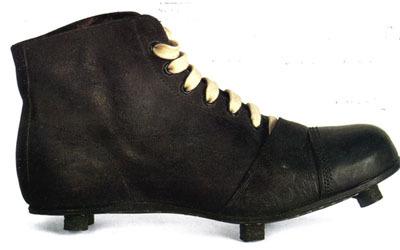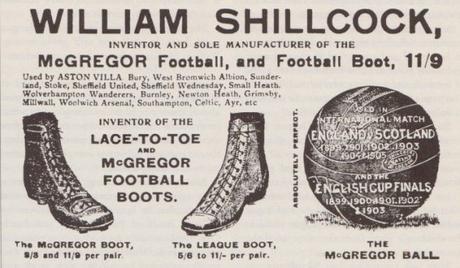I remember my first pair of cleats. I was nine years old, embarking on my first-ever season of organized ball. My mom took my little brother and me shopping at a local Payless — the only place my folks, understandably, would buy any kind of shoes for our growing feet. I was excited to finally be able to wear a pair of cleats. I had seen the older kids wearing them, and they just seemed so cool. After trying on multiple pairs, I wound up with a pair of black, low-top cleats with royal blue shoelaces and royal blue lettering that announced “Rawlings.”
It turns out, the concept of cleats has been around since the 1500s — and possibly even

What Henry VIII’s football boots might have looked like
earlier than that. King Henry VIII is documented to have owned a pair of “football boots,” created for him by the royal shoemaker, Cornelius Johnson. These special “boots” were created from a strong material (most likely leather) for the purposes for playing “football” (by which Henry likely means some early version of soccer). The earliest cleats typically featured leather, metal, or wooden studs. For those who couldn’t afford to have a special pair made, they would create their own shoe enhancements with the use of metal plates or (cringe) nails.
The process of vulcanization, a chemical process for converting rubber into a more durable material, was developed in England and the United States in the 1840s. Vulcanized rubber proved especially useful in producing shoes intended to protect the wearer’s feet, and, as a bonus, it was a much lighter material. Furthermore, vulcanized rubber proved handy when the concept of studded or spiked shoes emerged. The first known spiked leather running shoes were developed by a British company in the 1890s, and the first soccer-specific shoes were also developed at the end of the 19th century.

c. 1905 advertisement for football boots
In the United States, meanwhile, metal spikes began to appear on baseball shoes in the 1860s, typically in a detachable form, and the first official baseball shoe appeared in 1882 when Waldo Claflin started selling leather shoes with built-in cleats marketed specifically to baseball players. The emergence of American football in the early 20th century led to widespread recognition and popularity of cleats, the first football shoes actually being baseball shoes adapted to the new sport. Over time, as sports in general continued to grow and with the advent of artificial turf, cleats evolved, and different types of cleats developed according to various sports and playing surfaces. With safety in mind, Major League Baseball banned sharp, metal spikes in 1976, leading to further developments in the plastic studs we see on cleats today.


